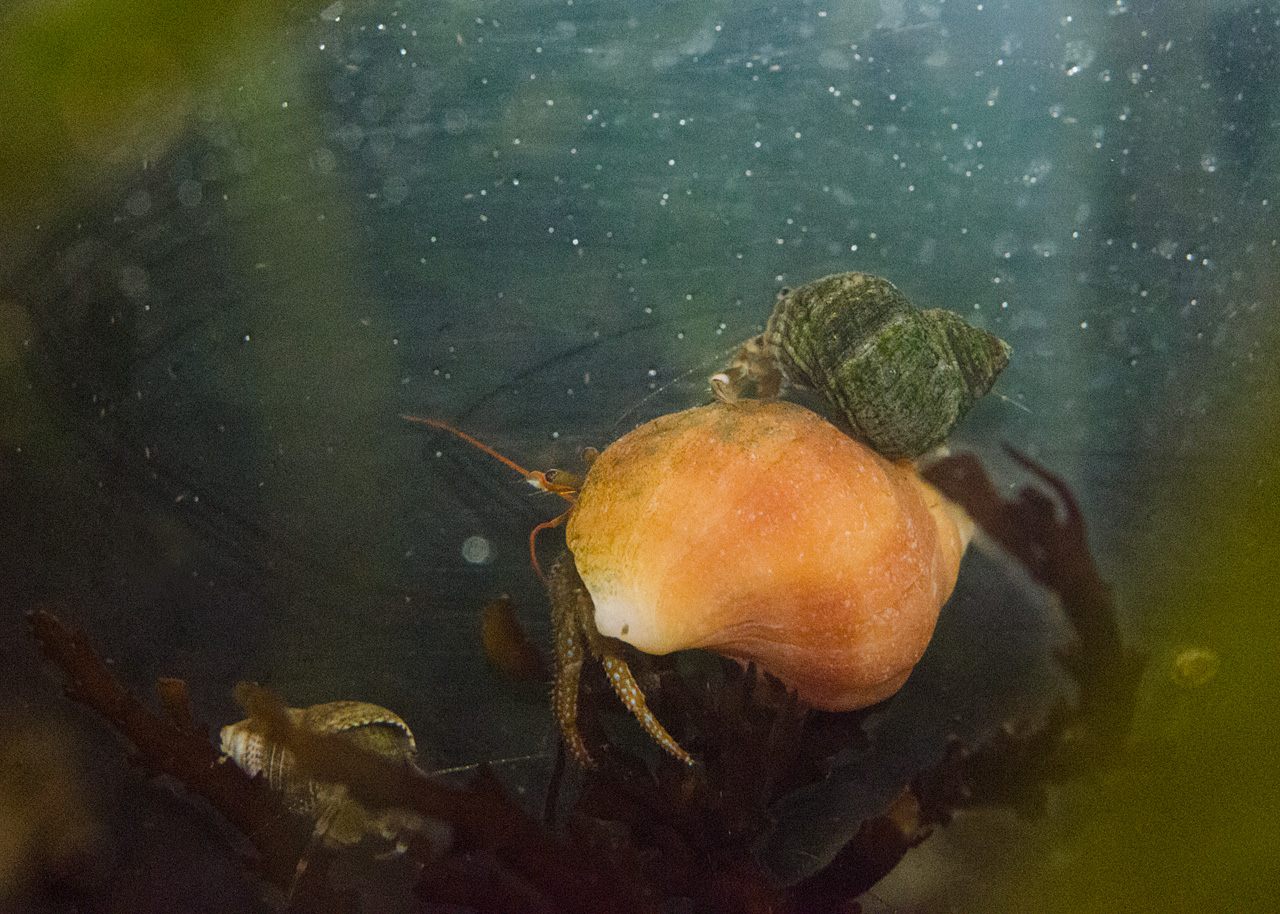I love it when one hermit goes for a walk on a blade of eelgrass, above the jungle below.
 |
| Small hermit, running, on waving eelgrass, halfway across the tank, but near the light. And the water is nearly clear up here. Auto lighting, auto noise filter. Piece of cake! |
Most of the crab and hermit crab activity, however, goes on down on the floor, amid scraps of seaweeds, worms, copepods, amphipods, snails, waving antennae, limpet poop, dancing sand grains, rolling stones, broken shells, waving anemone and barnacle tentacles.
And algae. Algae covers everything, including the glass I'm shooting through. No matter how I scrub it, there's always some there, caught in the scratches on the glass. The hermits and crabs are responsible for these scratches; they're always banging about with the sharp edges of their shells, or piling up sand against the glass, and then scraping it away, or trying to climb the unclimbable.
And the water is full of blowing "snow", the crumbs of food tossed out by the crabs, (messy eaters), copepods and air bubbles, bits of torn seaweed, shreds of discarded hermit molts, more limpet poop, oyster spits, more fragments of algae. The crabs and hermits are happy in clear water, but the anemones (orange-striped green, burrowing, pink-tipped green, and plumose in this tank) love this nutritious snow soup.
The camera doesn't. I can train my eye not to see it, but the camera notices every little copepod antenna and every rotting spot on the seaweed.
So here's a hermit (and a bit of a second hermit) in her usual habitat, just the way she likes it, the way I would find their community on the shore (except there, if I get down to their level, they all up and leave):
I had to clean up the background, delete quite a bit of glass algae and a blurry anemone, and adjust the light just to make the hermit visible in the mess. Imagine algae spots and swimming tinies all over.
Down in the left corner is a swarm of copepods. The snail shell at the right is vacant; soon one of the growing hermits will claim it. Some of the limpet poop is visible to the right of that blue stone.
The seaweeds are green sea lettuce, well used, a dark red blade algae, some holey kelp blades; the hermits have been chomping on this all week. The yellow edges are where the red algae is dead and flaking off. I could remove this, for the look of it, but the hermits love to eat it, so it stays. Both the hermit's shell and the empty snail shell are coated with thick green algae. The yellow stuff in back is the kelp that came with its holdfast last week. I just checked; there are four hermits working on this at the moment.
One of my crabs is very pregnant. I've been trying to get a photo: she's not cooperating. One of these days; now that the days outside are so short, I'll have more time to wait for her.



















































